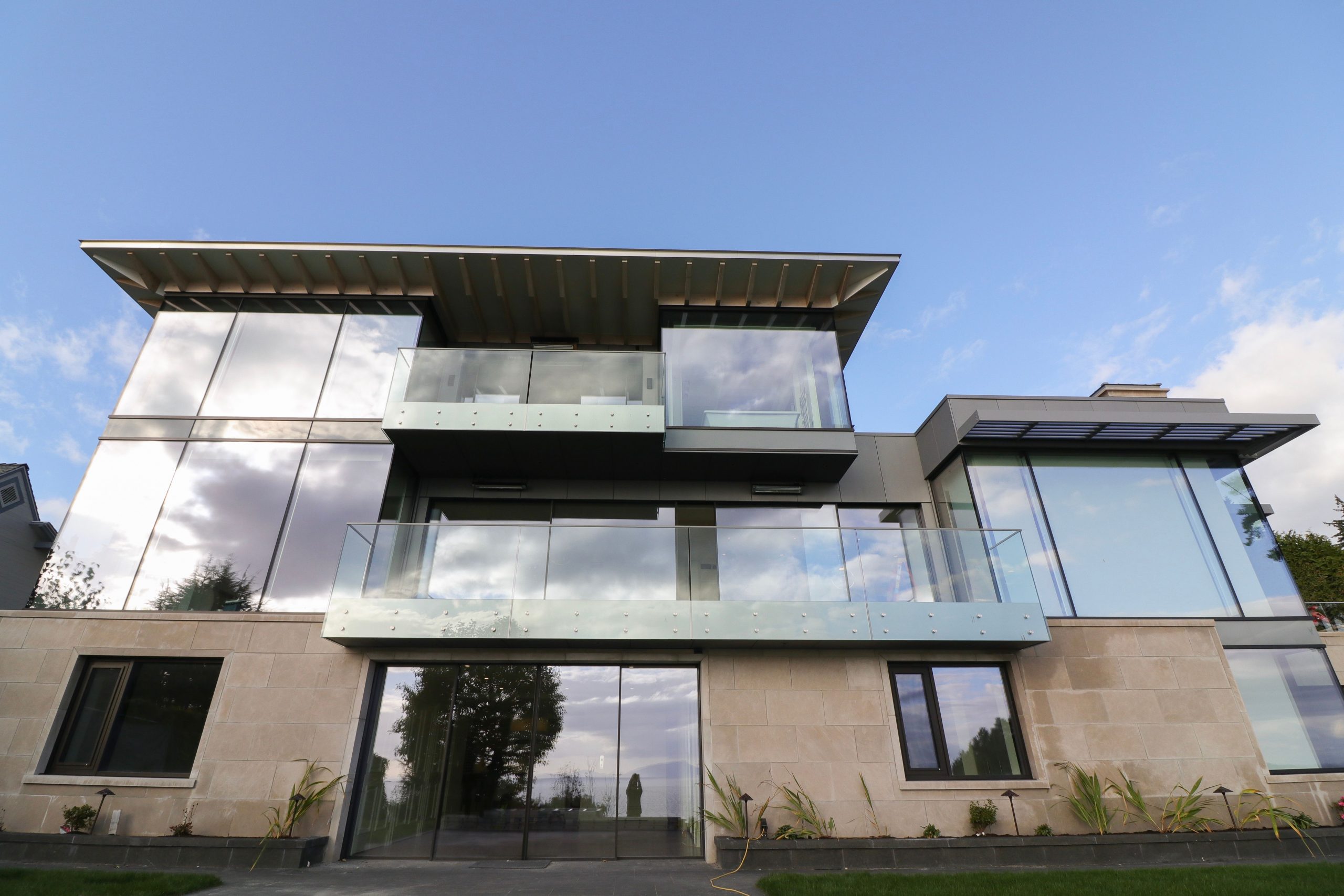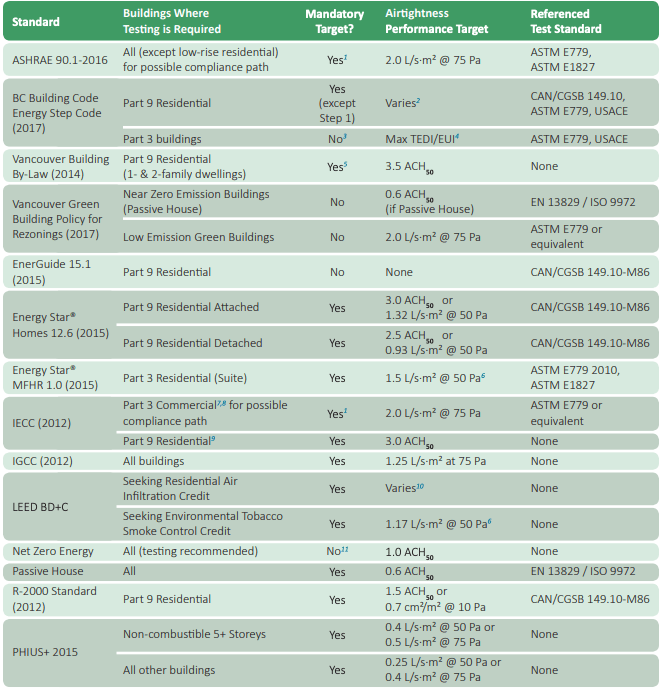
We can’t stress enough the importance of airtightness. Durability, comfort, energy efficiency, and healthy homes all relate back to airtightness. If you haven’t read our blog post about airtightness, see HERE.
Airtightness requirements in building codes and energy performance standards are becoming increasingly stringent. Recent codes and standards have now begun to include targets for whole-building airtightness as a way of achieving consistently higher levels of performance.
However, there is confusion in the industry with regards to testing standards, as different building types require unique testing targets and standards (methods to conduct and capture data for air tightness testing). Codes and standards typically specify airtightness performance targets using either of two metrics: Air Changes per Hour (ACH) or Normalized Air Leakage Rate (in L/S per m2 of building enclosure area). Both metrics are reported at a specific pressure difference, usually 50 or 75 Pascals (Pa).
The below table summarizes maximum air leakage rates and testing standards across British Columbia for different Building types, Code requirements, Home Labeling, or Certification programs.

Click HERE to read the full bulletin from BC Housing “Building Airtightness Targets in Code and Standards Across BC: Appendix A“

